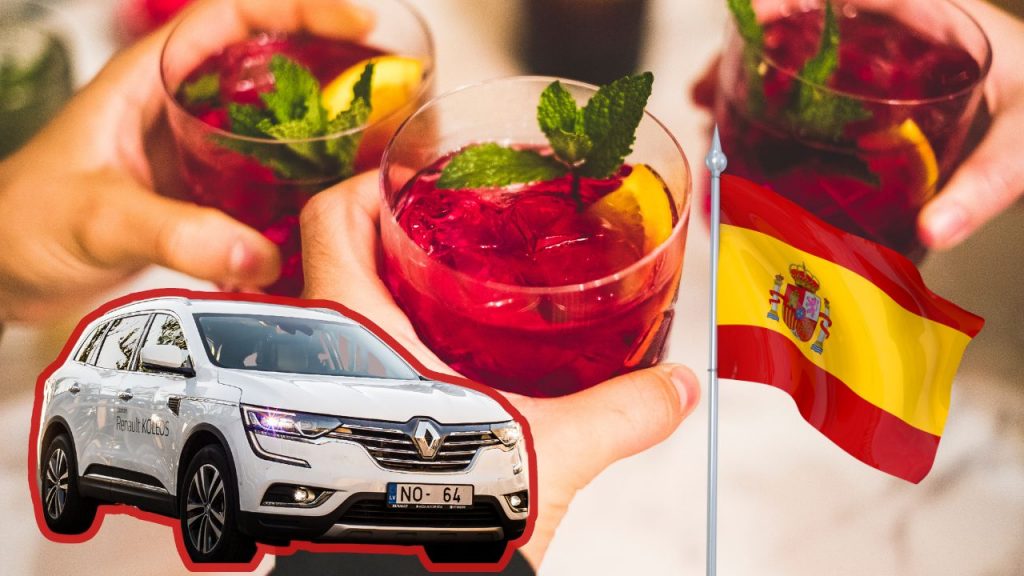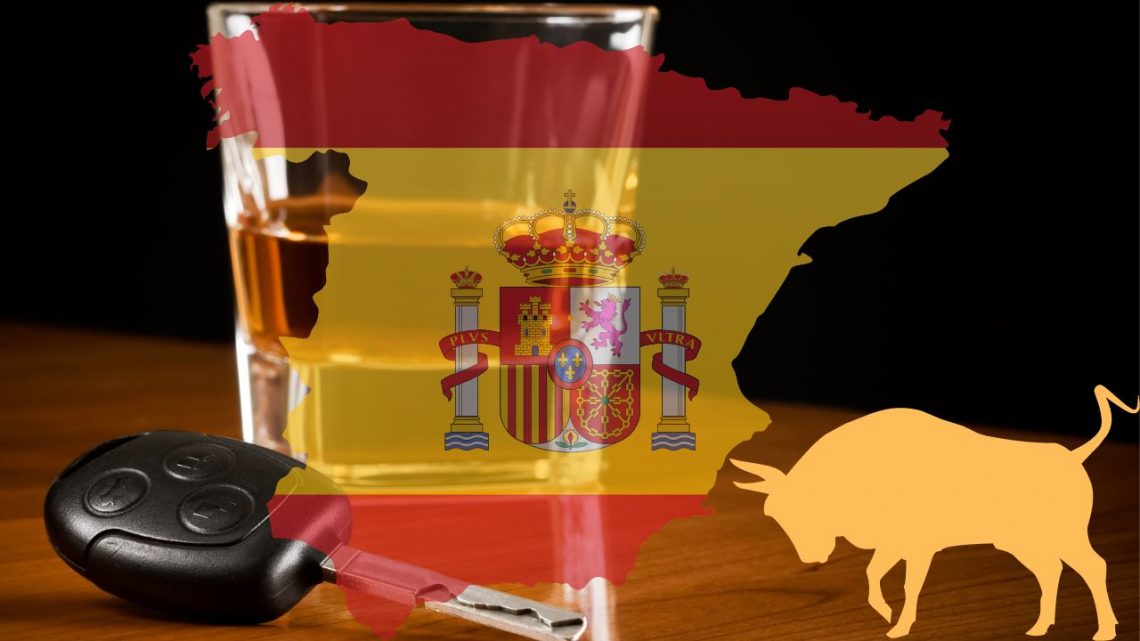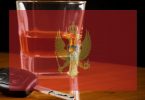In Spain, driving is prohibited for individuals with a blood alcohol content (BAC) exceeding 0.05% (50 milligrams of alcohol per 100 milliliters of blood).
This article aims to educate and raise awareness about drunk driving in Spain. This website does not advocate or endorse drunk driving in any state or region.
What is the legal alcohol limit for driving in Spain?
In Spain, the legal alcohol limit for driving varies depending on the category of driver to ensure safety on the roads. The limits are set to reduce the risk of accidents caused by impaired driving. Here’s a breakdown by driver category:
- Regular Drivers: The legal BAC limit is 0.05% (50 milligrams of alcohol per 100 milliliters of blood).
- Novice Drivers (drivers with less than two years of experience): The legal BAC limit is reduced to 0.03% (30 milligrams of alcohol per 100 milliliters of blood).
- Professional Drivers: This category includes bus and coach drivers, for whom the legal BAC limit is also set at 0.03% (30 milligrams of alcohol per 100 milliliters of blood).
Drink and Drive Penalties and Punishments in Spain
Spain has undergone significant legislative changes to combat drink driving and improve road safety. The focus on road safety became a top priority for the Spanish government, leading to the introduction of a penalty point system in July 2006 and subsequent amendments to the Criminal Code, marking serious drink driving as a criminal offense.
Current Penalties for Drink Driving Offenses:
- Administrative Offenses: Driving with a Blood Alcohol Content (BAC) between 0.5 g/l and 1.2 g/l is considered a very serious offense, with fines ranging from 300 to 600 EUR and possible license withdrawal for up to three months.
- Penalty Points: Drivers exceeding the maximum BAC limits face a deduction of 4 points for BAC levels between 0.5 g/l and 1 g/l, and 6 points for levels above 1 g/l. Refusal to undergo a blood or breath test results in a 6-point deduction and potentially a prison sentence ranging from 6 to 12 months, along with a license withdrawal between 1 and 4 years.
- Professional and Novice Drivers: These drivers lose 4 points for BAC levels between 0.3 g/l and 0.6 g/l and 6 points if higher.
- Criminal Procedures: For BAC levels over 1.2 g/l or in cases of dangerous driving, penalties include imprisonment from 3 to 6 months or fines, with possible community service and a license withdrawal period from 1 to 4 years. Refusing a breath test can lead to imprisonment for 6 months to 1 year and license withdrawal for the same duration.
Legislative Updates:
Spain has worked to streamline the sanctioning process for traffic offenses, reducing the procedural time from up to two years to a maximum of 5 months. The introduction of modern sanctioning procedures aims to decrease both the time and costs associated with the process, offering discounts for early payment of fines and encouraging electronic communication for efficiency.
The Importance of Staying Informed:
Legislation and enforcement practices evolve, reflecting Spain’s commitment to road safety. As such, drivers and residents are strongly advised to regularly check the official state website of the DGT (Spanish Directorate-General for Traffic) for the latest updates on drink driving laws, penalties, and procedures to ensure compliance and promote safer driving practices.
How Can I Calculate if My Alcohol Blood Limit Is Legal in Spain?
In Spain, the enforcement authorities, primarily the police, determine a driver’s blood alcohol content (BAC) level through breathalyzer tests. These devices are designed to accurately measure the alcohol concentration in one’s breath, which is then converted to determine the BAC. This method is widely used due to its non-invasiveness and immediate results, allowing law enforcement to swiftly assess whether a driver is over the legal alcohol limit for driving.
As an experienced phlebologist with a decade of expertise, I understand the critical importance of accurately determining BAC levels to prevent impaired driving. Here are two recommended ways to check your BAC level:
- Use a High-Quality Alcohol Breathalyzer:
- Among the available options, the BACtrack S80 stands out for its reliability and precision. It’s a professional-grade device that is DOT & NHTSA approved as well as FDA 510(k) cleared, ensuring its accuracy and dependability.
- I strongly recommend keeping a BACtrack S80 in your car. It’s a common observation in Spain that individuals often misjudge their BAC levels, leading to unintentional impaired driving. Having a personal breathalyzer allows you to assess your alcohol level before deciding to drive, offering a layer of safety and responsibility.
- Utilize My BAC Calculator:
- In collaboration with fellow phlebologists and web developers, I’ve developed an online BAC calculator. This tool takes into account various factors such as weight, gender, the amount of alcohol consumed, and the time period over which it was consumed to estimate your BAC level.
- While our calculator is designed with accuracy in mind, it’s important to remember that like all BAC calculators, it provides an estimation rather than an exact measurement. This tool can be particularly useful for planning your evening or assessing your ability to drive at a later time.
Important Consideration:
Both the BACtrack S80 breathalyzer and our online BAC calculator are valuable tools that can help you make informed decisions about driving after consuming alcohol. However, it’s crucial to remember that these methods cannot guarantee 100% accuracy due to individual variations in alcohol metabolism and other factors. They should be used as guides to help you stay within legal limits and make safer driving decisions.
Ultimately, the best advice is to err on the side of caution. If you have any doubts about your sobriety, opting not to drive is the safest choice. Remember, these tools are here to assist you, but they do not replace responsible drinking practices and adherence to local laws.
Ways to Avoid Driving with a High BAC in Spain

Driving with a high blood alcohol concentration (BAC) is not only illegal but also poses significant risks to both the driver and others on the road. In Spain, where socializing often involves alcohol, it’s essential to plan ahead to ensure you can return home safely without driving under the influence. Here are practical recommendations to avoid driving with a high BAC:
- Utilize Taxi Apps or Local Taxi Services:
- With the availability of global taxi apps like Uber, finding a ride home has never been easier. These apps offer the convenience of booking a ride with just a few taps on your smartphone, providing a safe and efficient alternative to driving.
- For a more local touch or in areas where these apps might not operate, consider using city-specific taxi services. In Barcelona, for instance, “Taxi Barcelona 7 Plazas” offers spacious rides for larger groups, while “Radio Taxi Madrid Airport” in Madrid is reliable for airport transfers and city rides. These local companies offer the reliability and safety needed to ensure you can enjoy your night without the worry of driving home.
- Order a Designated Driver Service:
- If you’ve driven to a location and find yourself unable to safely drive back due to alcohol consumption, a designated driver service is an excellent solution. These services provide a professional driver to safely drive you and your car back home.
- In Barcelona, “Private Driver Barcelona” offers such services, ensuring you and your car get back safely. Similarly, “Personal Drivers Madrid – Chofer Privado de Lujo” provides luxury designated driver services in Madrid, offering both safety and style.
- To find a designated driver service in your area, a simple Google search for “designated driver service” along with your city name will yield numerous options. This ensures you don’t have to leave your car behind or risk driving under the influence.
The key to avoiding the risks associated with driving with a high BAC is planning. Before heading out, decide on how you’ll return home. Whether it’s booking a taxi or arranging for a designated driver, the options available today make it easier than ever to make responsible choices. Remember, the cost of a taxi or driver service is negligible compared to the potential consequences of driving under the influence. By choosing a safe and legal way to get home, you’re not only protecting yourself but also others on the road.
Sticking to Drink and Drive Laws in Spain: Sad Statistics
Alcohol significantly impacts road safety in Spain, contributing to 25% of fatal incidents in 2019, as reported by the ETSC. Enhanced traffic law enforcement, including an increase in Civil Guard drink-driving checks, has been instrumental in reducing these figures. Despite this, driving under the influence remains a major safety risk, underscoring the importance of opting for alternative transportation methods after consuming alcohol.
Utilizing designated driver services, taxis, or other public transport options is a safer alternative to driving when alcohol is involved. For those who may still need to drive, it’s critical to assess your blood alcohol content (BAC) accurately using a reliable alcohol breathalyzer. This precaution helps ensure compliance with Spain’s drunk driving laws and personal safety.
It’s vital to stay informed about the latest in drunk driving regulations and preventive measures. The ETSC’s official website offers comprehensive resources and guidelines on navigating these laws safely. Remember, the decision to drive after drinking, even minimally, should be approached with caution, prioritizing safety above all.







